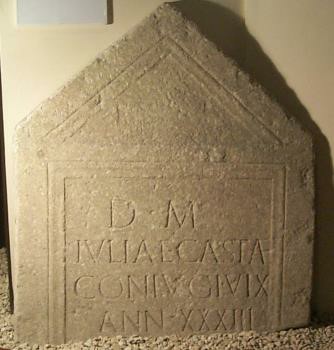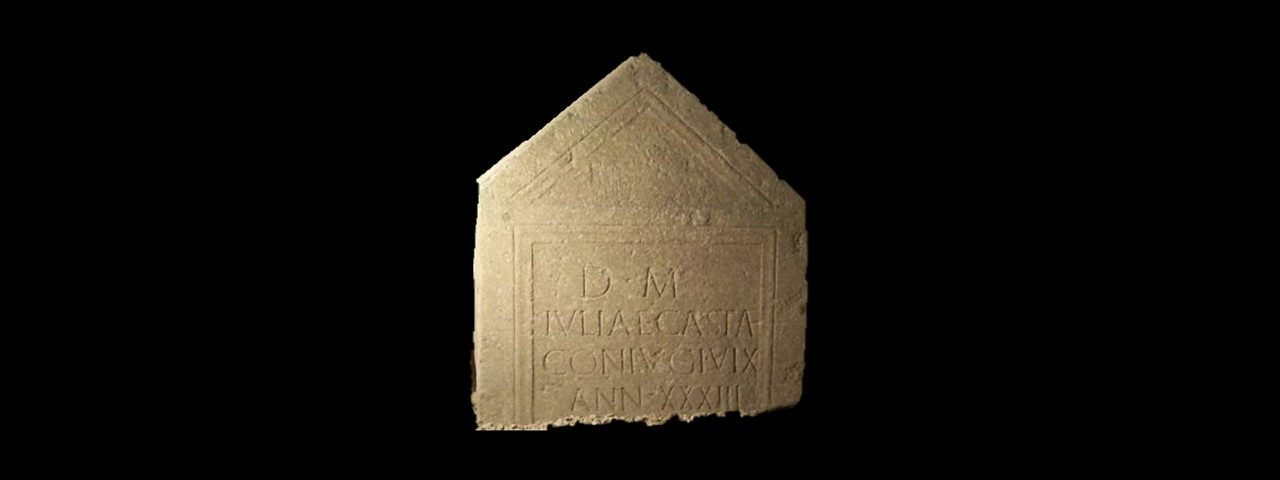Blog From Home by Lorna Hetherington
The planned town of Corinium Dobunnornan was built after military troops left in AD 70. The grid system of streets began from the centre with the Forum. Shop keepers lived in their shops closest to town. The more elaborate houses featured further out from this, where they stood in their own grounds representing a more affluent level of society.
Typically, in an important Roman centre like Corinium, there are many examples of military tombstones depicting the high status and the prestige of the soldiers who had resided there. The stone materials chosen to remember these individuals were deliberately high quality and inscriptions are sometimes extremely elaborate. Many of these tombstones can be found in the collection at the Corinium Museum.

1063 RIB 113, Object Number B2051
However, I am particularly excited when I discover actual names of civilians on tombstones from this period. It provides a tiny glimpse, into the lives of the Romano British people that lived in Corinium. I have chosen this tombstone with the inscription Julia Casta, as it is fascinating that at a time when women were yet to enjoy a more equal society how she was valued and remembered. Analysing a tombstone is but a small fragment of the larger puzzle. Our understanding of the Romano British woman is increased by studying the actual human remains and grave goods. However, no such objects exist for this woman in question. Urns that were found in the discovery area did not survive, with the exception of her skull that was found in a summerhouse at a house in Castle Street owned by Mr Issac Tibbot. The tombstone and the question as to the whereabouts of her skull remain intriguing this. It opens up many questions, some being unanswerable without further physical objects being discovered.
The tombstone is made of Purbeck marble, and was discovered at the site of The Querns a Roman burial area within the immediate environs of Cirencester in or before 1721. The inscription on this high quality stone has written the following:
‘To the spirits of the departed (and) to Julia Casta, his wife, (who) lived 33 years’.
The lower section of the tombstone has broken off unfortunately. Did this lower section contain more interesting details about her role in society, her family life, or her occupation? Why was she remembered? One thing we can definitely be very confident about observing is that she was most likely from the more affluent section of Romano British society in Corinium. Her tombstone would have been expensive to source and to decorate with the inscription. We can speculate that she may have lived in one of the more elaborate houses set in their own grounds. She may have enjoyed much of what the town had to offer, living a very privileged lifestyle.
Blog from home written by Lorna Hetherington
Lorna has a background in archaeology (BSc at Univesity of York) and Conservation of Historic Objects (University of Lincoln).
References
‘Romano-British Cemeteries at Cirencester’ Alan McWhir, Linda Viner and Calvin Wells. Cirencester Excavations 11, 1982.










